Thank you all!
One more--my favorite combination for all of it's briefness--
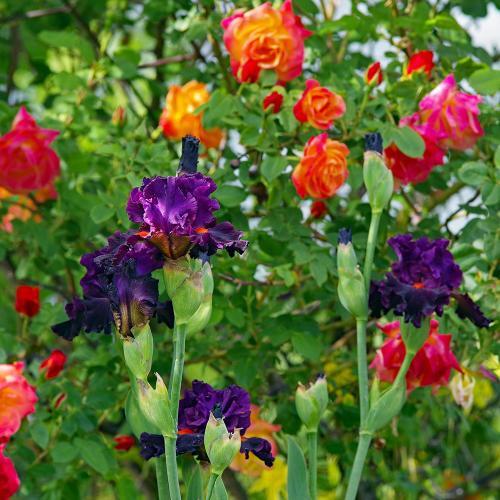
Daffy Duck and Joseph's Coat
It was hard to get a photo of to do it justice
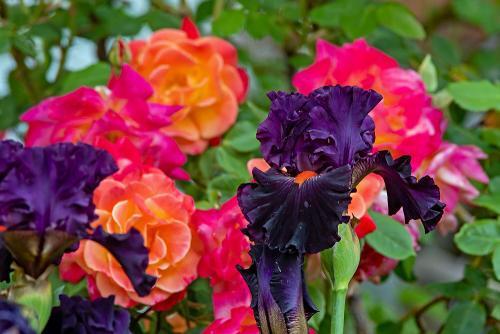
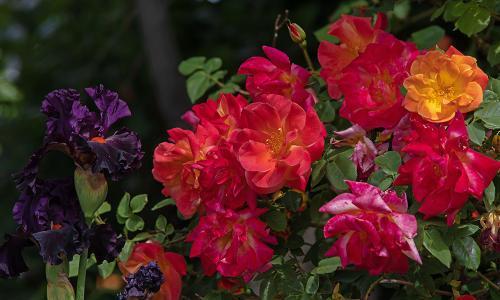
as soon as the sun comes up over the mountain it gets blasty and harsh. But I love these colors together

Crete is also nice with the rose
Sorry about the crooked windspinny thing
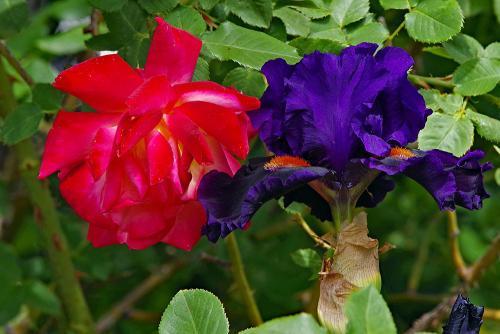
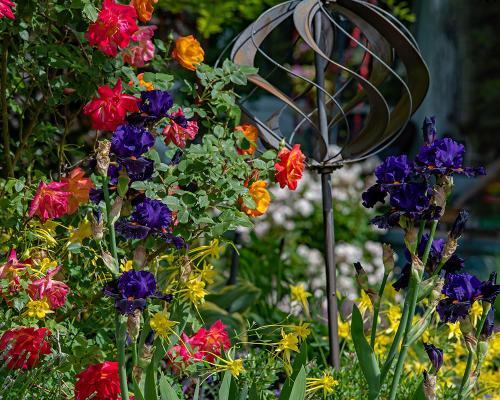
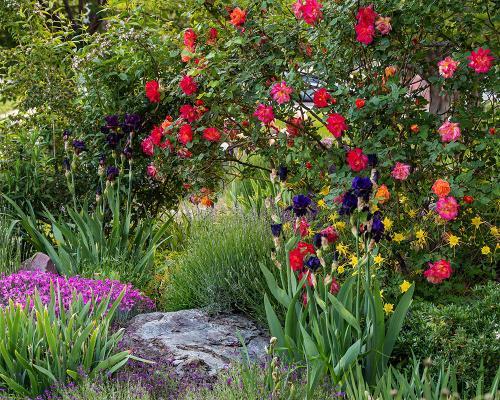
Back to the interesting discussion--
Rain??? what is that? It's been so long I can't quite remember

Seriously though, we don't get summer rain here.
My 0.02 worth:
Around here, irises in abandoned old homesteads and gone feral (where folks have dumped them) in places that are not irrigated do survive with aplomb. They don't thrive to the point of needing division every few years; they look pretty scorched by July and August but not exactly 'dormant'; and, they will bloom fairly well, yet, only after winters with ample snow.
When I have extracted samples from the 'wild' to plant in the gardens, they have active roots in the height of summer and will commence growing upon being replanted.
The only rhizomatous irises that seem to go truly summer-dormant are the arils and some 1/2 to 3/4 arilbreds. They will shed their dead leaves and remain a hidden yet viable rhizome with minimal to no root activity if kept dry, then in the fall they send out new roots much like bulbs do. Sometimes they will send up leaves in the fall but not always, and then in the spring, they spring to life with leaves and blooms

The dormancy of dug-up rhizomes is another thing altogether...
Freshly dug and freshly replanted, they are not dormant at all. The root damage that occurs even with the best of techniques can't support the leaves, so if all are left and left long, they will wilt for a while and the outer leaves and tips will brown sooner than if they hadn't been dug, but otherwise, they do just keep going like nothing happened.
Dug, trimmed, and dried, though, begins the forced siesta. The longer they are dried, the more dormant they become.
It is a common misconception that soaking very dry irises is good for them and that shriveled roots will start being roots again. Dried up roots never come back to life. (I have relocated a large number of newly planted irises for various stupid reasons, at multiple points along the newly planted continuum, to know this) New roots must sprout from the base of the rhizome. They will do this in response to moisture in the air or in soil, but, in soggy conditions the rhizome can rot before new roots become functional. A brief soak may sort of rehydrate the rhizome and doesn't seem to hurt anything. I have done it plenty, because other people said to do it--not sure if it does any good though. I have also certainly planted plenty of "iris jerky" directly, with indistinguishable results. Once I started getting irises from vendors, I noticed some had planting instructions that specified NOT to soak them first, so I quit doing that.
I discovered last summer that one sure fire way to cause a corky-type dry-rot is to pot up irises in free-draining soil-less mix (to combat over watering), then water them frequently and get them rooting, then have your water shut off for several weeks and quit watering them completely during an extended scorcher of a heat wave, and then douse them after they have become critically decimated. Very sad.
Anyway, I haven't had trouble in pots as long as I keep them watered. But I prefer to put them directly in the ground, water them in good, once, and then approximately bi-weekly.
The way I see it, here anyway, the bearded irises can survive just fine without summer water, but it's not a requirement per say, in that they actually thrive and perform better with some irrigation and/or rain, if such a thing ever happens.
The bacteria that causes bacterial soft-rot occurs everywhere and is already present in soil.
In my experience, it occurs more often in newly planted rhizomes or in clumps that have had some damage to the rhizomes--and it is generally independent of how much water they are getting, or not, as the case may be. And by that I mean, if there is access into the rhizome and the bacteria enters, the rhizome begins to rot.
The other type of soft rot is root-rot and this is caused by persistently more water than the drainage can account for.
We rarely have issues with that here in the high desert but it can happen. I have drowned some in poor sites by watering too much.





